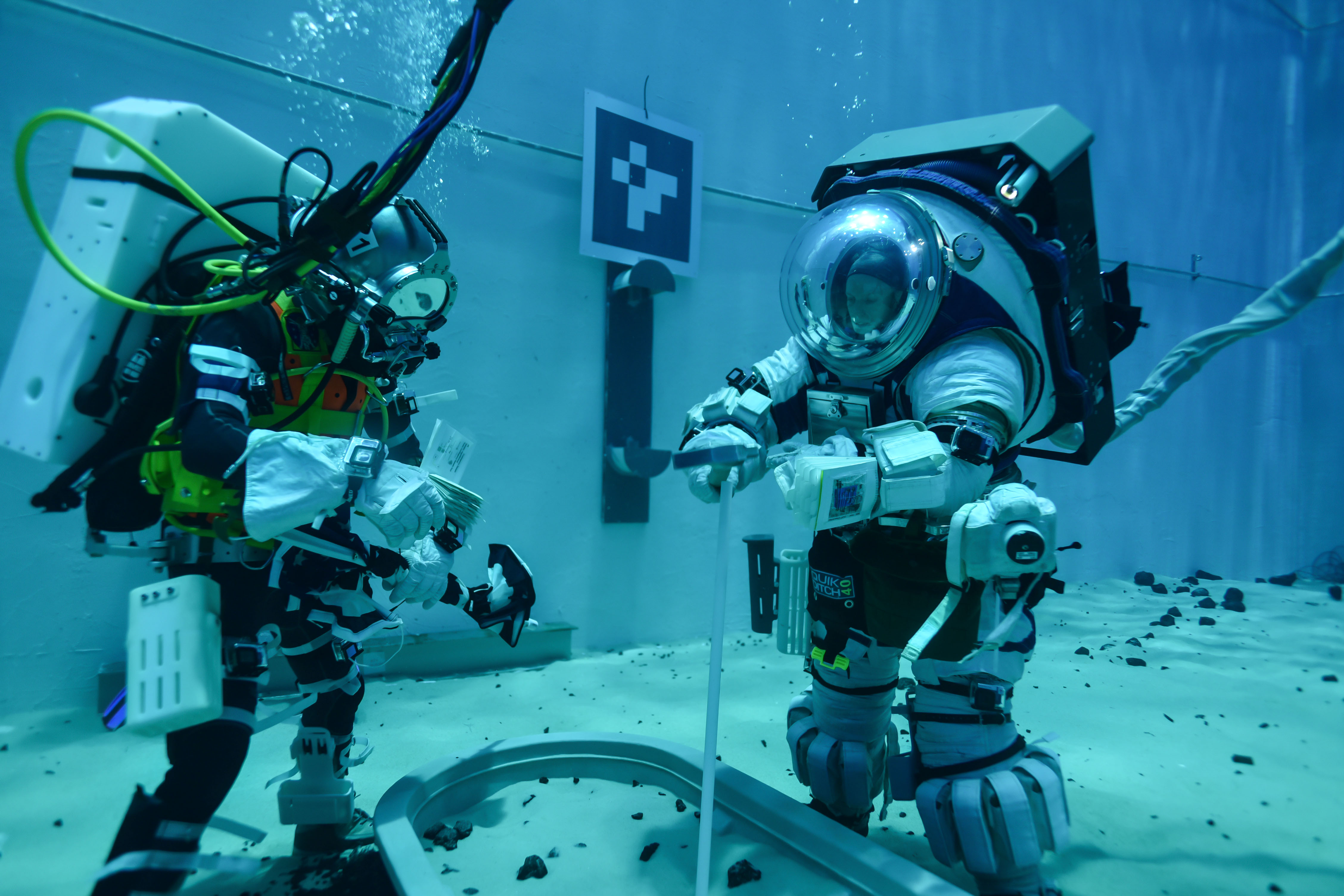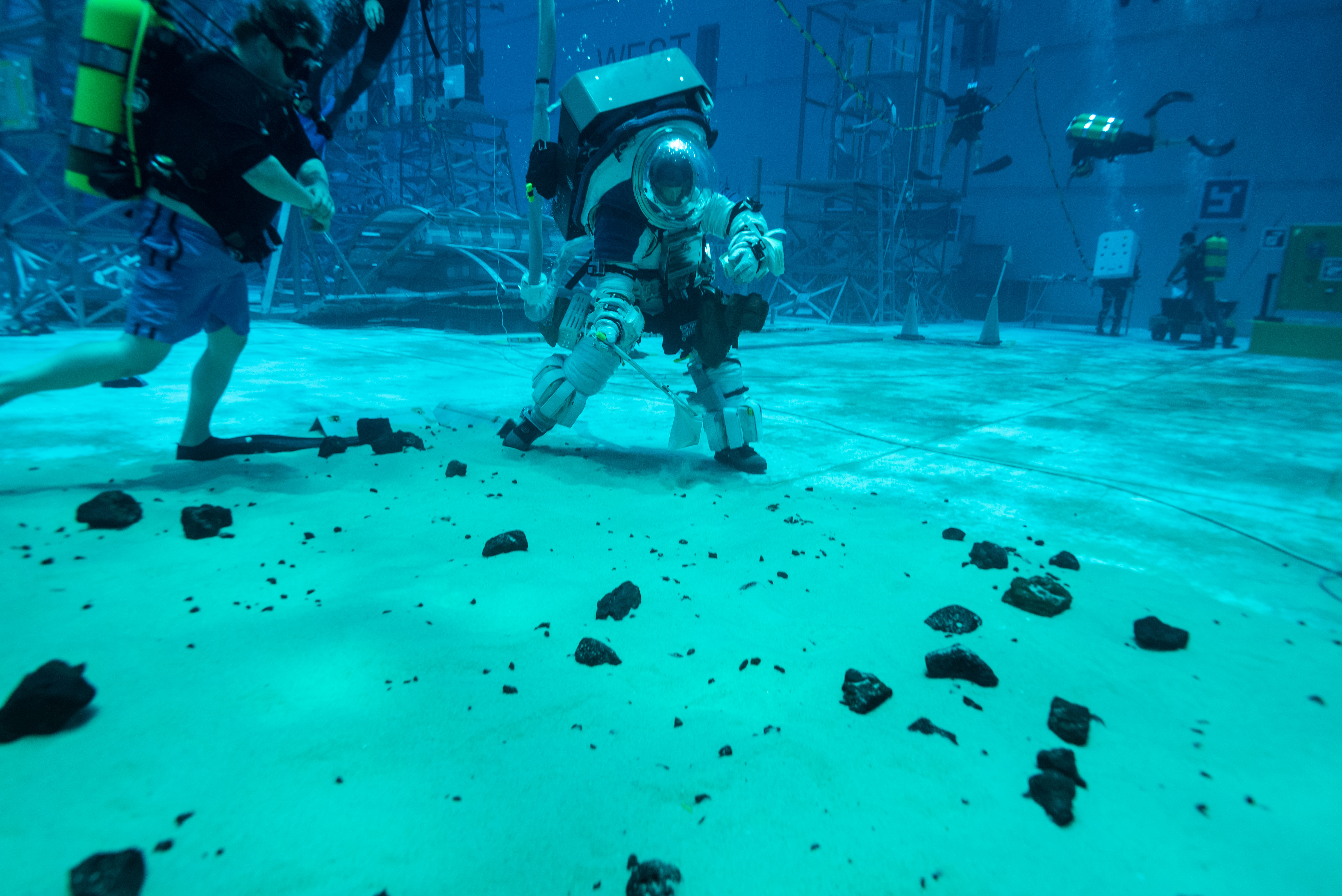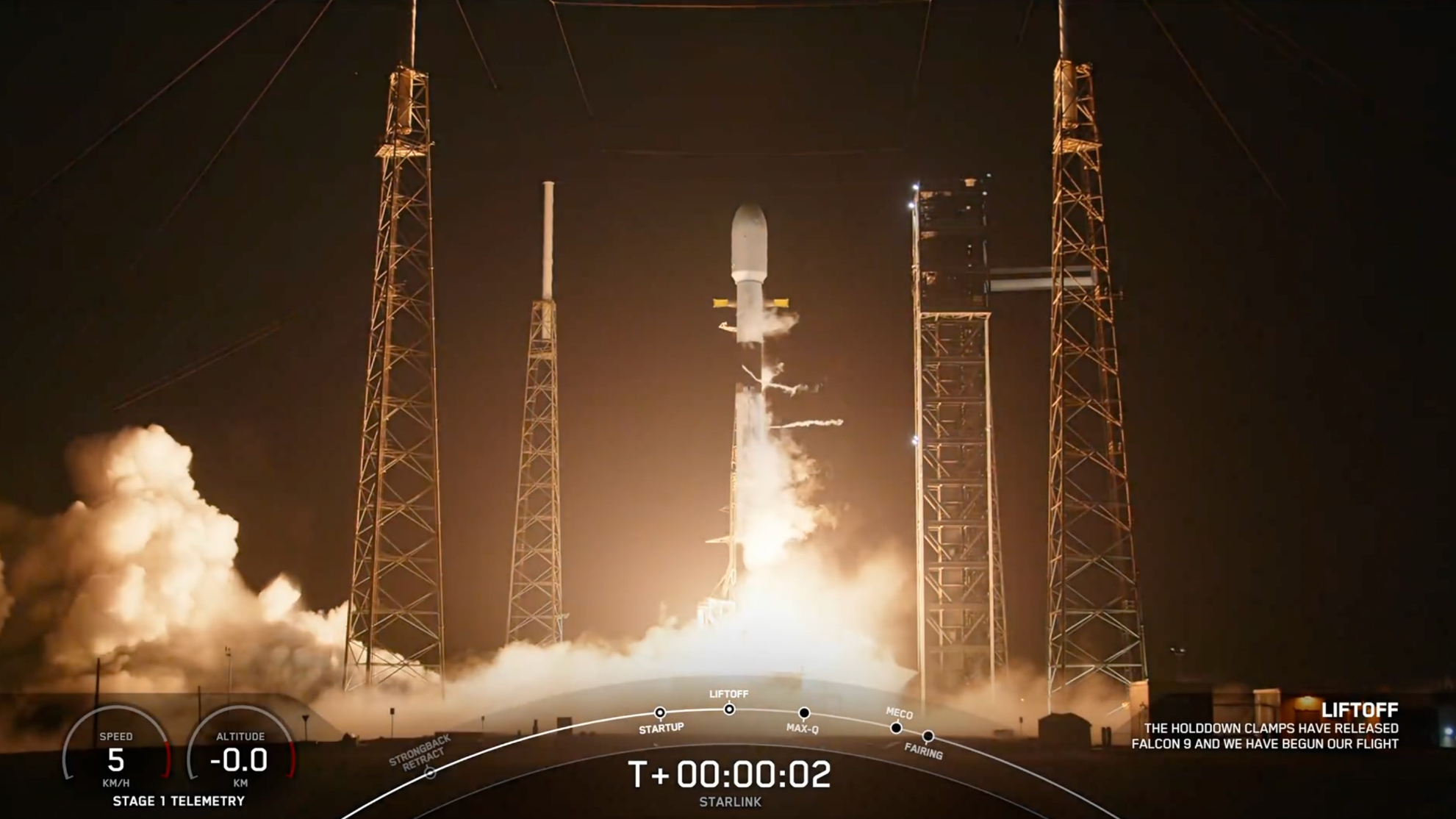NASA is testing the first of its new moonwalking spacesuits
What will astronauts wear on the big day when they step foot on the moon as the first humans to do so in more than 50 years?
A brand-new spacesuit, of course, and one that NASA is hard at work developing. Called the Exploration Extravehicular Mobility Unit (xEMU), the spacesuit needs to protect astronauts from the harsh environment of the lunar surface, which is quite different from that astronauts have been exploring for the past few decades in low Earth orbit.
Progress on the suit has been overshadowed by work on the big-ticket hardware also needed by NASA's Artemis program of crewed lunar exploration — the Orion capsule and much-delayed Space Launch System rocket — but development nevertheless continues.
Related: The evolution of the spacesuit in pictures

"The xEMU represents the first new spacesuit that NASA has developed in over 40 years," George Nield, who was previously the associate administrator for commercial space transportation at the Federal Aviation Administration, said on Oct. 1 during a webcast quarterly meeting of NASA's Aerospace Safety Advisory Panel, on which he now sits.. "So far, it looks like things are pretty much on schedule."
Nield outlined the agency's plan to build five xEMU suits in the initial batch. One, which NASA engineers will subject to design verification tests, is almost done and should be completed in December, he said. A second will be built for qualification testing and a third will be tested in orbit on the International Space Station. The final two suits of the set will walk on the moon in 2024 on a mission NASA is calling Artemis 3.
In addition to the main spacesuits, each Artemis astronaut will also require an internal cooling garment, and NASA has now completed the first prototype of that undergarment, according to Nield. And the agency also needs to upgrade the backpack-like Portable Life Support System that astronauts carry to stay alive, also in the works.
Get the Space.com Newsletter
Breaking space news, the latest updates on rocket launches, skywatching events and more!

Meanwhile, NASA personnel are getting a sense of how the new suit will perform on the moon by testing the design underwater in the massive Neutral Buoyancy Laboratory pool at NASA's Johnson Space Center in Houston. NASA uses the lab to simulate spacewalks, since engineers can mimic different levels of gravity underwater, like low Earth orbit's microgravity and the moon's one-sixth gravity.
Underwater, astronauts can get a feel for moving around in a spacesuit and using the tools they will manipulate during a spacewalk. Lately, NASA has been using the pool to study movements like sampling moon rock and dust, navigating a ladder and ceremonially planting a flag in the lunar surface.

After all, lunar spacewalks have different constraints than orbital excursions do — which is why NASA needs a new spacesuit in the first place.
"We have experience with space station, but we need to determine how we're going to train the crew for surface operations during these specific missions," Daren Welsh, who leads spacewalk tests, said in a NASA statement. "This early testing will help determine the best complement of facilities for hardware development and requirements for future Artemis training and missions."
Email Meghan Bartels at mbartels@space.com or follow her on Twitter @meghanbartels. Follow us on Twitter @Spacedotcom and on Facebook.
Join our Space Forums to keep talking space on the latest missions, night sky and more! And if you have a news tip, correction or comment, let us know at: community@space.com.

Meghan is a senior writer at Space.com and has more than five years' experience as a science journalist based in New York City. She joined Space.com in July 2018, with previous writing published in outlets including Newsweek and Audubon. Meghan earned an MA in science journalism from New York University and a BA in classics from Georgetown University, and in her free time she enjoys reading and visiting museums. Follow her on Twitter at @meghanbartels.
-
dark Well, I was really hoping that NASA would have come up with something that was not so bulky and more maneuverable for the Astronauts. This seems much bigger then the past suits and harder to move around in.Reply -
AustinSTX I was also expecting maneuverability to be visible, especially with a headline that called them "moonwalking space suits"....they should be able to dance!Reply -
dark Yea, to me watching them, was like watching the Charlies Angles movie where they were in those fat sumo suits. That's how they looked moving around. Not a good look if you ask me.Reply -
JPL-ACE The suits are to keep them alive and healthy, not win beauty contests. The vacuum of space will kill them in seconds. The radiation in days or even hours. They are using older tech because this time, there is no Apollo gold plated budget.Reply -
Geomartian The original “gold plated” Apollo suits were experiencing serious issues with lunar grit after only three surface excursions. Wrist/glove connectors were starting to jam. The material of the suits was starting to get punctured by the jagged welding slag that passes for dirt on the lunar surface.Reply
Another problem with manned space suits is that those space suits will enter your living spaces. Lunar slag and dust are extremely irritating and potentially toxic. You want to keep that stuff out of your living spaces. This is not like annoying beach or desert sand which has been rounded by abrasion and weathering. This is jagged, with molecular thin edges, which can slice through cellular walls like your lungs or eye surfaces on contact.
As long as these suits stay on tumbled regolith paths (smoothed and rounded grit) they might be OK.
You can adapt remotely tele-operated robots to the moon’s surface using flexures and other technology which are not as susceptible to grit. Anything with a moving surface to surface contact should be avoided in an environment like the Moon. Some of the lunar material contains fractured zircon and nano-diamonds which will scour and gouge any metal no matter how hard.
Dedicated telepresence robots would be a much better investment than these suits. The robots could be cycled through cleaning stations or glove boxes when they need maintenance or cleaning. This will keep the grit out of the living spaces.









